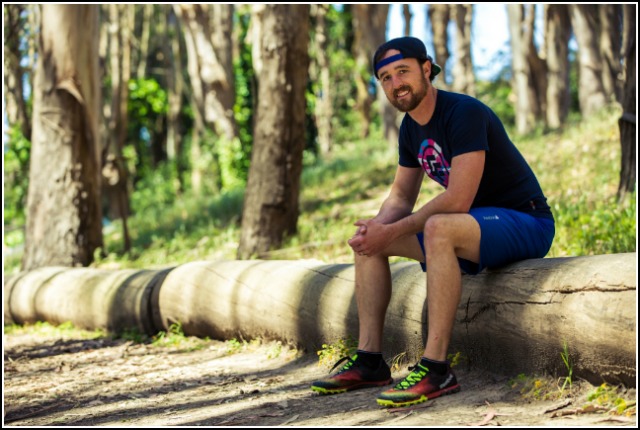Being a runner has a special side-benefit: all that training makes you feel strong, powerful, and alive!

The decision to start running was one of the best I’ve ever made in my life. I’m sure you feel the same way, too.
As soon as the initial feelings of soreness pass, most runners are overcome with positive fitness adaptations that spill into their everyday lives:
- Running up a flight of stairs isn’t so hard anymore!
- Playing “horsey” is a lot easier after building your core strength…
- Mowing the lawn (with my push-reel…) doesn’t feel like a tempo run
- A good morning run sets you up with an early “win” and makes you more focused the rest of the day
Running simply makes life easier.
And the better shape you’re in, the easier household chores and other physically demanding activities become.
But it’s important to remember that running by itself only gets you so far. It’s a fairly one-dimensional form of exercise, after all.
If you look at how pro runners train (hell, even high school runners), you’ll see a lot of “other things” in their training:
- Form drills
- Plyometrics
- Bodyweight strength workouts
- Mobility
- Barefoot work
- Skill-based strength exercises (like Olympic lifts)
- Dynamic flexibility routines
Whoever said runners just ran?!
All of this supplemental training makes you stronger, more efficient, and flexible with higher levels of coordination.
In other words, you become a better athlete. Because you’re not a runner – you’re an athlete that specializes in running.
I wanted to dive into this topic in more detail so you know what to do – and how to do it – to become a faster and less injury-prone runner.
And Nate Helming is here to help.
Nate Helming on Running as an Athlete

Nate is the cofounder of The Run Experience. And he doesn’t just have a USA Track & Field coaching certification. He’s also completed continuing education courses in:
- USA Triathlon
- CrossFit
- CrossFit Mobility
- CrossFit Endurance
- Carol Paoli’s Free Style connections
Like me, he recognizes that injury prevention and athleticism are what make faster, healthier runners.
And in this conversation, we dive deeper into mobility work for runners and how to implement a daily mobilization routine into your schedule. Plus, the differences between mobility and flexibility.
You’ll notice that Nate has quite the background in CrossFit. While I’ve gone off on CrossFit in the past, we acknowledge the helpful parts of this sport that runners can use to design smarter training.
If you’re injury-prone or looking for ways to level up your training, you don’t want to miss this episode.
Download it on Stitcher or subscribe on iTunes.
Show Links & Resources
- The Run Experience
- The Run Experience on Facebook
- The App for The Run Experience
- Strength Running’s injury prevention ecourse
- The Strength Running Podcast
- The Little Black Book of Prevention & Recovery (free)
- SR’s complimentary strength resources
A big thanks to Nate for coming on the podcast! Thank you for sharing your coaching advice, prevention ideas, and philosophizing about running 🙂
One of the best ways to invest in your running is to become a better athlete – and that often starts with getting stronger.
I invite you to register for our new email series on strength training. We’ll cover:
- The many benefits you can expect from strength training
- Mistakes to avoid (and workouts that are counter-productive)
- Example exercises that prioritize power and explosivity
- Our complete, end-to-end strength program
I think you’re going to love it. Sign up here and I’ll be in touch soon!